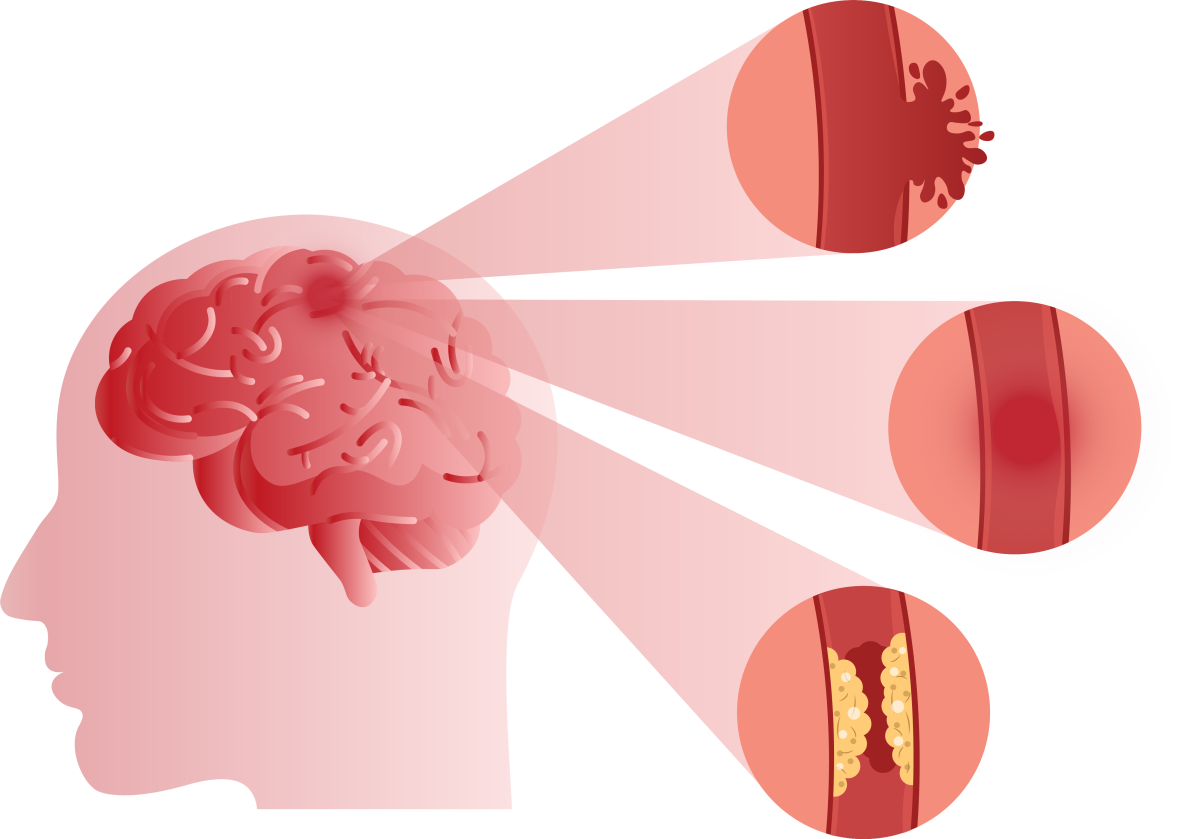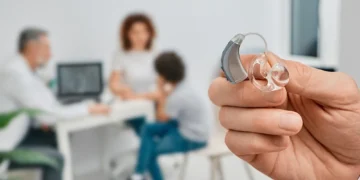Helping stroke victims is a great choice that everyone should be encouraged to do at the workplace, in public spaces, in malls and in institutions.
Stroke is a very complicated thing to deal with, especially in an emergency situation. Proper knowledge and guidance about first aid for stroke at home is highly recommended for everyone.
Every minute counts, as time is of the essence when it comes to helping stroke victims and making critical decisions in order to save their lives.
This comprehensive guide aims to provide essential knowledge on first aid for stroke victims, empowering you to take swift and effective action when faced with this life-threatening situation.
Table of Contents
Understanding Stroke
Cerebrovascular Accident (CVA), known as a medical terminology for Stroke. It is a serious medical condition that interrupts the flow of blood to the brain’s nervous system.
Our brain cells need a steady supply of oxygen and glucose, which they emanate from the blood vessels. When this supply is interrupted, brain cells begin to die within minutes.
This is because, without the necessary nutrients and oxygen from the blood, they cannot perform their functions and begin to deteriorate rapidly.
A stroke mainly stems from issues related to our blood vessels. Any intoxicated substance that might disrupt blood circulation will eventually lead to severe symptoms. Hence, detecting those early signs and symptoms of stroke is very important.
The Early Signs and Symptoms of Stroke
Identifying the early signs and symptoms of a stroke is crucial, as it’s a primary step for providing effective first aid for all stroke victims.
Stroke is displayed in different ways for each different individual based on their experiences. But there are common symptoms to be aware of. By understanding these symptoms in detail, you can be better prepared to identify a stroke and take immediate action:
Numbness in the Body
Numbness in the body is caused by distress and nerve blockages that stop the blood from flowing to the brain during pulmonary activities such as running, cycling, exercising, etc.
It is also primarily considered as a hallmark sign of having an intense stroke.
It is normally displayed when the person or the stroke victim is having huge difficulty in moving a specific part of his body, such as arms or legs.
Difficulty in Speaking
Difficulty with speech is a major sign of having a stroke. When there is a nerve blockage or artery malfunctioning in the body, it becomes difficult for stroke victims to move their jaws for talking.
Their speech may increasingly become mumble-jumble or incomprehensible. They may also find it difficult to utter specific words that might be simple or easy for others to speak.
Severe Headache
Severe headaches are a potential sign of hemorrhagic strokes. Stroke victims might also experience a little bit of concussion on their head.
If not addressed properly, these mild concussions can also lead to vomiting and distress in the whole body. They will feel extremely low and tired due to the severity of headaches.
Blurred Vision or Eyesight
Having intense blurry visions can be an early warning sign of a stroke. The person may experience sudden loss of eyesight in one or both eyes, double vision, or blurred vision. Sometimes, they may have difficulty seeing objects clearly or have a sudden onset of visual disturbances.
Facial Drooping
Facial drooping is a classic sign of a stroke. Ask the person to smile. If one side of their face sags or appears uneven when they smile, it’s a strong indication of a stroke.
It’s important to note that these symptoms can occur suddenly and may be temporary or persist. The acronym “FAST” is a helpful way to remember these key stroke symptoms:
- F: Face drooping
- A: Arm weakness
- S: Speech difficulty
- T: Time to call 911
If you or someone you are with experiences any of these symptoms, call 911 immediately. Time is critical in stroke cases, and getting prompt medical attention can significantly improve the chances of recovery.
While waiting for help to arrive, stay with the person, reassure them, and provide support as needed. Your quick response can save lives.
How Can You Help
After knowing the early signs and symptoms of stroke in a person, the first question arises: what to do next?
Well, in this section of the article, we are going to discuss exactly that for you in terms of how you can help further in relieving the pain of stroke victims.
Here are some of the important steps to take during a stroke emergency:
- Call for Emergency Medical Help Services
Help services are always around the corner to respond to all kinds of medical emergencies for 24 hours. Make sure to contact them immediately when you have seen a person actually suffering from a stroke.
The helpline numbers are always available on all phone services. Do remember that time is of the essence in situations like these. Always take logical steps without wasting any time.
- Check the patient’s level of consciousness
It is highly important to check whether the person suffering from a stroke is awake or not. Sometimes, due to the nerve or artery blockage in the veins caused by the stroke, the patient dozes off into hibernation (i.e., unconsciousness).
This will eventually affect the whole treatment procedure of the patient if at the time he is not responsive or conscious to the doctors.
Hence trying to keep them awake during their stroke is of utmost priority for you if you want to save their lives.
- Proper Monitoring and Caring For the Patients
Keep a close eye on all of their needs during stroke. Monitor each and every behavioral change they experience during these critical moments.
Stay close to them always and properly care for them until the Medical help services arrive there. Keep their palms warm by rubbing your hands on them, this will make them feel less nauseous.
And always keep them talking. If they are unable to speak make sure you keep conversing with them. In situations like these, talking always helps.
Frequently Asked Questions (FAQs)
Q: Are Strokes Preventable in Emergency Situations?
A: While some risk factors for stroke occurring in the human body, such as age and genetics, are always beyond our control. However, strokes are preventable. Lifestyle changes such as dietary routines, regular exercise, and managing health conditions like high blood pressure and diabetes can significantly reduce the risk of Stroke.
Q: Can strokes be genetic?
A: Yes, there is a genetic component to stroke risk. If you have a family history of stroke, it’s essential to be aware of other risk factors and take preventive measures. Stroke complications might flow in the family DNAs from one generation to another if not treated properly.
Q: What are the preventive measures that one should be aware of while attending to the stroke victims?
A: One should always be aware of the fact that during stroke emergencies, time is precious. Calling the medical help services right after you spot all the common symptoms of stroke in their behavior is an important as well as a necessary step.
Q: Is there any effective treatment methods for stroke?
A: One effective treatment for a stroke emergency is clot-busting medication, which is a tissue plasminogen activator (tPA) that typically takes 4.5 hours to come into effect after the symptom onset. However, the sooner treatment begins, the better the outcome.
Final Thoughts
Acquiring as much knowledge about stroke and its symptoms is highly beneficial for everyone who wants to save the lives of all stroke victims. Recognizing stroke symptoms through the popular F.A.S.T test method is highly recommended for everyone.
But the most essential thing that people forget about stroke victims is caring. All they crave for is proper care and attention during their medical condition to get better. Your genuine loving affection and caring sensibility will definitely have a positive impact on their condition.
Getting in touch with medical professionals and practitioners is also a great step towards knowing proper first aid for stroke victims. Hence, be close to them and try to listen to them more, be their knight in shining armor.


 Home
Home









